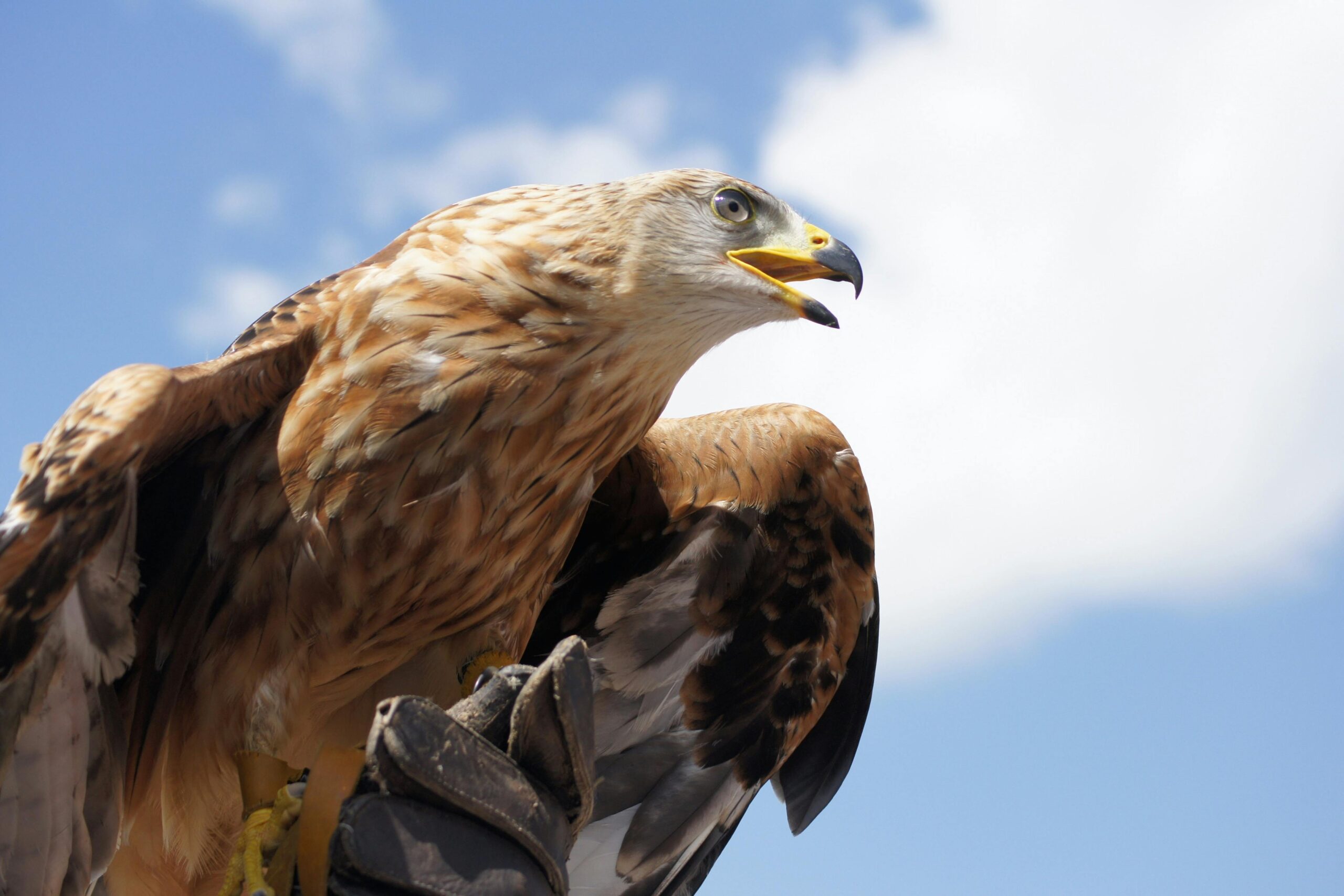The life cycle of a Golden Eagle (Aquila chrysaetos) is a fascinating journey filled with complex behaviors, adaptations, and a remarkable lifespan. These majestic birds of prey are known for their impressive size, hunting prowess, and their ability to thrive in diverse habitats across the Northern Hemisphere.
Habitat and Nesting
Golden Eagles inhabit open and semi-open country with native vegetation, avoiding developed areas and dense forests. They are primarily found in mountainous regions, canyonlands, and along riverside cliffs and bluffs, where they build their massive nests. These nests can be up to 20 feet tall and 8.5 feet wide, made of sticks, vegetation, and even human-made objects.
Breeding and Reproduction
Golden Eagles reach sexual maturity and are ready for breeding at four years of age or older. They are monogamous and mate until one partner dies, after which the surviving partner will find a new mate. Breeding occurs between January and September, depending on the location. The female lays a clutch of one to four eggs, with two being the average. Eggs hatch in approximately 45 days, and the baby golden eagles emerge helpless and blind, entirely dependent on their parents for food.
Chick Development and Fledging
The eggs are laid three to four days apart, and the older, stronger chick may kill the younger one if resources are limited. The birds begin to fly when they are nine to 10 weeks old, and parents provide meat for them until they are around 14 weeks old or older.
Feeding and Behavior
Golden Eagles prey mainly on small to medium-sized mammals, including hares, rabbits, ground squirrels, prairie dogs, and marmots. They are also capable of taking larger bird and mammal prey, including cranes, swans, deer, and domestic livestock. In addition to live prey, Golden Eagles often feed on carrion, following crows and other scavengers to a meal. They also catch fish, rob nests, and steal food from other birds.
Conservation and Threats
Golden Eagle populations were stable between 1966 and 2019, according to the North American Breeding Bird Survey. Partners in Flight estimates their global breeding population to be 130,000 and rates them 10 out of 20 on the Continental Concern Score, indicating a species of low conservation concern. However, humans remain the greatest threat to Golden Eagles, with more than 70% of recorded deaths attributable to human impact, either intentional or inadvertent.
Unique Behaviors
Golden Eagles are known for their shocking speed and ability to maneuver despite their great size. The fastest dive recorded has been at 200 miles per hour. Males court females by making 20 steep dives and upward movements, beating their wings with each rise. Eagles, being predators, don’t seem like a playful bunch, but they engage in aerial play with objects such as sticks or dead prey, carrying these items high into the sky, then dropping and retrieving them.
Real-life Incidents and Statistics
In Israel, juvenile golden eagles were still close to the nest and quite dependent on parents for food at 60-70 days old after fledging. From their first winter until their fourth or fifth winter is the least well-known of the golden eagle’s life. Juveniles disperse widely during their first year, with males remaining closer to the natal area than the more highly exploratory females.
In North Dakota, radio-tagged juvenile golden eagles stayed within 5 km (3.1 mi) of the nest for the first 100 days after fledging but then moved further away. Movements of first-year eagles from Denali National Park averaged more than 5,500 km (3,400 mi), with surviving individuals migrating south to western Canada and the Western U.S. in autumn then moving back north to western Yukon and Alaska in spring.
References:
– Golden Eagle Life Cycle
– Life Cycle of the Golden Eagle
– Golden Eagle Life History
– Golden Eagle Fact Sheet
– Reproduction and Life Cycle of the Golden Eagle




